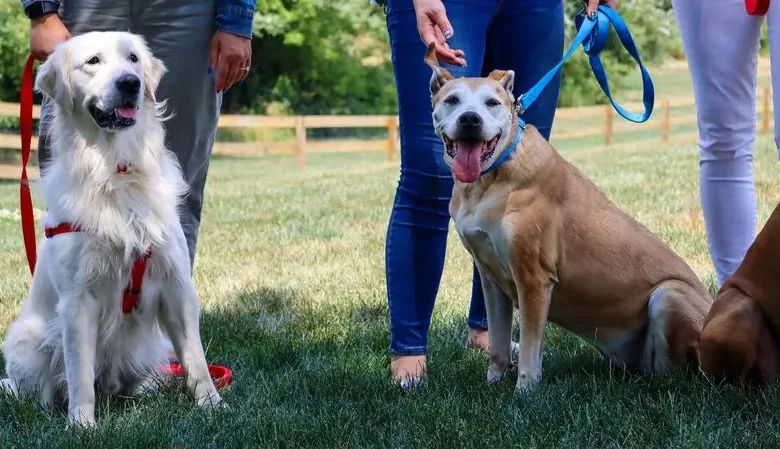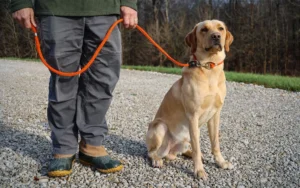Safe Choke Collars for Sensitive Dogs: A Comprehensive Guide
Explain Safe Choke Collars for Sensitive Dogs

Finding the right equipment is crucial when training and controlling sensitive dogs. Safe choke collars for sensitive dogs provide an effective solution while prioritizing their comfort and well-being. This guide delves into the importance of using safe choke collars, their features, and how to select the right one for your furry friend.
Understanding Safe Choke Collars for Sensitive Dogs
The safe choke collars for sensitive dogs are designed to provide gentle correction without causing harm or discomfort to dogs with sensitive temperaments. They differ significantly from traditional choke collars, which can inflict pain and anxiety. The primary goal is to create a training tool that reinforces good behavior while ensuring the dog’s emotional and physical safety.
Why Choose Safe Choke Collars for Sensitive Dogs?
Sensitive dogs often react negatively to harsh training methods. A safe choke collar offers a more compassionate alternative. By using a collar that applies pressure in a controlled manner, dog owners can guide their pets without the risk of causing distress or injury. This approach promotes trust and a stronger bond between the dog and the owner.
The Benefits of Safe Choke Collars

The adjustable tension feature is one key benefit of safe choke collars for sensitive dogs. This allows owners to customize the collar’s sensitivity, ensuring it only applies gentle pressure when necessary. These collars are made from soft materials that minimize irritation and prevent chafing.
Another advantage is the ability to communicate clearly with the dog. When used correctly, safe choke collars help convey commands effectively, making training sessions more productive. This clarity is particularly beneficial for sensitive dogs, who may be more prone to confusion or anxiety during training.
Features to Look for in Safe Choke Collars
When searching for safe choke collars for sensitive dogs, several features must be considered to ensure the collar meets the dog’s specific needs.
Material Quality
High-quality materials are paramount. Look for collars made from soft, durable fabrics that will not irritate your dog’s skin. Neoprene or padded collars are excellent options, as they provide comfort without sacrificing strength.
Adjustable Fit
An adjustable collar is essential for achieving the right fit. A too-tight collar can cause discomfort, while one too loose may not provide adequate control. Many safe choke collars feature adjustable sizes for breeds and neck sizes.
Reflective Elements
Consider collars with reflective elements if you often walk your dog in low-light conditions. These enhance visibility and safety during nighttime outings, ensuring you and your sensitive dog can enjoy walks without worry.
Ease of Use
Look for collars that are easy to put on and take off. A simple design helps reduce stress for both you and your dog. Additionally, consider collars that have a quick-release mechanism for added convenience.
How to Properly Use Safe Choke Collars for Sensitive Dogs
Using safe choke collars correctly is essential to ensure a positive training experience. Begin by introducing the collar to your dog in a calm setting. Allow your pet to sniff and explore the collar before putting it on. This will help reduce anxiety and make the collar seem less intimidating.
Start with short training sessions once your dog is comfortable wearing the collar. Use gentle, consistent commands to encourage good behavior. If your dog responds positively, reward it with praise or treats. Continually monitor your dog’s reaction to the collar, adjusting the tension if necessary to maintain comfort.
Training Tips for Using Safe Choke Collars

To maximize the effectiveness of safe choke collars for sensitive dogs, consider incorporating a few training tips:
- Positive Reinforcement:
Combine the use of the collar with positive reinforcement techniques. Reward good behavior with treats and praise to reinforce the desired actions. - Consistency:
Be consistent with commands and training sessions. This will help your sensitive dog understand expectations and build confidence. - Short Sessions:
Keep training sessions brief to prevent overwhelming your dog. Gradually increase the duration as your dog becomes more comfortable. - Regular Breaks:
Allow your dog to take breaks during training. This helps prevent fatigue and maintains their interest in the process.
Conclusion
Safe choke collars for sensitive dogs effectively guide and train your pet without causing discomfort or distress. Choosing a collar made from high-quality materials and incorporating gentle training techniques can foster a trusting relationship with your furry friend. Remember, the goal is to create a positive experience that reinforces good behavior while prioritizing your dog’s comfort and well-being.
FAQs
Q: Are safe choke collars suitable for all dog breeds?
While safe choke collars can benefit many breeds, their suitability depends on the individual dog’s temperament and sensitivity. It’s essential to assess your dog’s specific needs and consult a professional trainer if unsure.
Q: How can I tell if my dog’s collar is too tight or loose?
A properly fitted collar should be snug but not tight. You should be able to fit two fingers comfortably between the collar and your dog’s neck. Adjust the collar accordingly if you notice signs of discomfort, such as excessive scratching or reluctance to walk.





